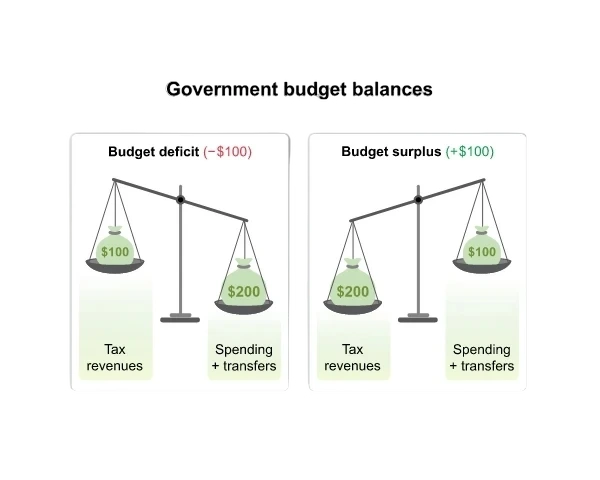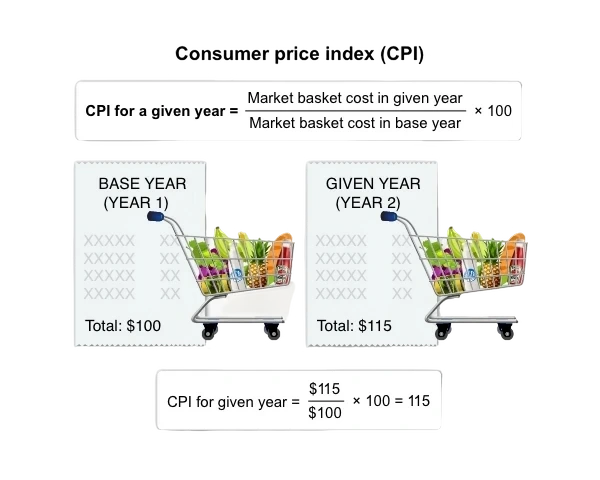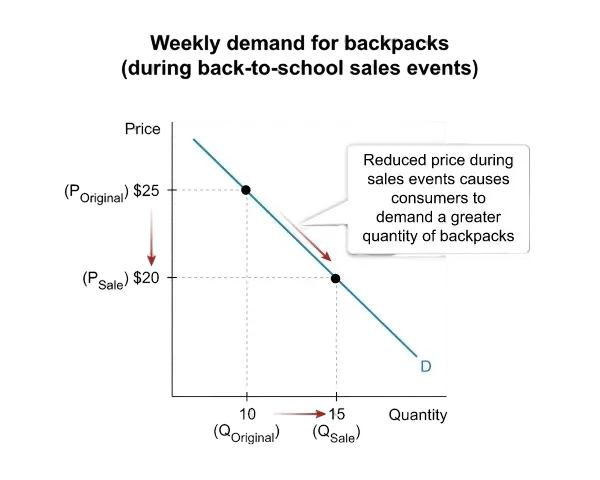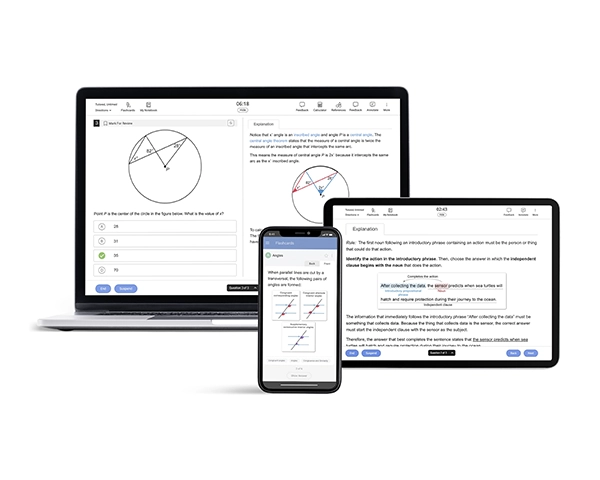Navigating AP® Macroeconomics may initially seem daunting due to its complex theories and graphs. However, the subject is more approachable than it seems — it explains why people specialize in certain industries and why governments implement specific policies.
In this guide, we’ll explore effective study schedules, essential review materials, detailed study plans, and proven strategies on how to study for AP Macroeconomics to make your exam prep experience manageable and rewarding.
What Does the AP Macroeconomics Exam Cover?
The AP Macroeconomics exam is divided into 2 sections: multiple-choice (MCQ) and free-response (FRQ). The MCQ section is worth 66% of your final score and includes 60 questions to be completed in 1 hour and 10 minutes. The FRQ section makes up 33% of your final score and consists of 3 questions to be answered in 1 hour.
Here is a breakdown of the 6 AP Macroeconomics units and their weights on the exam.
- Unit 1: Basic Economic Concepts (5-10%)
- Unit 2: Economic Indicators and the Business Cycle (12-17%)
- Unit 3: National Income and Price Determination (17-27%)
- Unit 4: Financial Sector (18-23%)
- Unit 5: Long-Run Consequences of Stabilization Policies (20-30%)
- Unit 6: Open Economy—International Trade and Finance (10-13%)
Get a detailed understanding of what each unit covers. Read our AP Macroeconomics course and exam description (CED).

How to Do Well on the AP Macroeconomics Exam: Scoring a 3, 4, or 5
The optimal prep strategy to pass AP Macroeconomics involves actively engaging in your AP class, establishing a routine study schedule, completing class assignments, and reinforcing your understanding of concepts through independent study and regular practice.
Below, we have compiled a few ap macro tips to help you elevate your test prep and achieve your desired score.
- Gear Up for Study Mode: Create a dedicated study space, cut distractions, and tackle one unit at a time. Formulate steady study routines and regularly revisit class notes. Focus intensively 1-3 months prior to your exam, prioritizing AP Macro practice questions and addressing weak areas. Remember, in-class tests impact your course grade and enhance AP exam preparedness.
- Master Note-Taking in Class: Daily note-taking in your AP class is crucial, supporting both assignments and tests. Since AP exams explore big-picture concepts and intricate details, bullet point your teacher's main ideas using shorthand, then underline key points when reviewing. Transfer these to UWorld digital notebooks and flashcards to organize your notes and retain concepts for a longer period of time.
- Resources at Your Fingertips: When the going gets tough, remember: resources are your friends. Don't overlook your textbook — readings, lectures, assignments, and tests all prep you for your exam. Invest in a quality prep course like UWorld, which stands out with its collection of realistic questions, meticulously designed to mirror the style and difficulty of the AP Macroeconomics exam.
- Review Important Concepts with Video Lessons: Given the inherently visual nature of Macroeconomics, incorporating informational videos into your study routine can significantly enhance comprehension. These videos, spanning areas from graphs and charts to formulas and key concepts, can serve as a valuable resource, offering an engaging and insightful supplement to other study materials.
- Burnout is a Real Thing: While studying is important, don't forget to plan for balance. Burnout, often kept hidden due to shame and feelings of failure, leads to falling behind, impacting student grades and GPA. Recognize 3 of the biggest signs of burnout: difficulty concentrating, resentment, and isolation. Take breaks, communicate your struggles, and seek support.
AP Macroeconomics Quality Review/Study Materials
Struggling to find the best way to study for the AP Macro exam? With so many resources out there, it’s tough to know where to start. To make your prep easier, we’ve compiled a list of top study tools to help you succeed:
- AP Classroom: A College Board® platform with unit guides, practice questions, and assignments.
- AP Daily Videos: Official YouTube lessons from AP teachers covering key concepts and exam questions.
- Past Exam Questions: College Board FRQs and scoring rubrics from past AP Macroeconomics exams to familiarize yourself with the test format.
- Quality Prep Courses: UWorld’s AP Macroeconomics course features an extensive question bank, comprehensive study guide, and digital tools such as flashcards, a notebook, a progress tracker, and a built-in calculator to help you retain concepts and track your performance.
Using a combination of these resources will strengthen your understanding and improve your test-day confidence!
AP Macroeconomics Study Plan and Tips
Before beginning your AP Macroeconomics study journey, one of the most valuable AP Macro tips is to come up with a study plan and adhere to it diligently to optimize your chances of success. Following is a structured study schedule for 3 months, 1 month, and 2 weeks, ensuring a balanced and effective test preparation.
- Begin in February to ensure ample time to cover all units.
- Unit 1 - Basic Economic Concepts: Spend 1 week.
- Units 2-3 - Economic Indicators and Price Determination : Allocate 2 weeks.
- Units 4 - Monetary Policy: Allocate 2 weeks
- Units 5-6 - Long-run Economy and International Trade: Allocate 2 weeks.
- Refresh your understanding using your textbook or UWorld’s AP Macroeconomics Study Guide.
- Set aside 2 to 3 short sessions each week to review MCQ-style practice questions.
- Consistently revisit challenging concepts.
- Start timing your MCQs to match exam conditions: Aim for about 1 minute per question.
- Review past FRQs from College Board to familiarize yourself with potential essay questions.
- Outline and practice writing responses at least twice a month.
- Time yourself to adapt to the exam pace.
- Create and review flashcards daily for key formulas and rules.
- Regularly schedule breaks to stay refreshed — plan a day off each week or take an afternoon off when necessary.
- Start with a general review of course topics, unit by unit at a quicker pace.
- Utilize resources such as textbooks, class notes, and course materials for concept refreshers.
- Prioritize completing textbook practice problems and using the UWorld QBank 2 to 3 times per week for 20-30 minutes per study session.
- With UWorld: To save time, focus on explanations for missed questions, reviewing the concepts that need the most improvement.
- Basic Concepts and Economic Indicators (Units 1-2): Allocate 1 week
- Price Determination and Monetary Policy (Units 3-4): Allocate 2 weeks
- Long-run Economy and International Trade(Units 5-6): Allocate 1 week
- Use any remaining time to review concepts from each unit which you missed previously to reinforce learning.
Kick off your study by tackling a few UWorld AP Macroeconomics MCQs in each topic to spot the ones that are harder to you. Dive into the explanations for any questions you miss. If you’re still feeling shaky, watch a video or review your notes on those tough topics. Then, circle back with more UWorld questions to see how much you’ve improved!
Spend most of your week diving into AP Macro FRQs — they're a great way to cover lots of topics at once and really efficient for review. Plus, they make you show your work, which helps you get a solid handle on the whole problem-solving process.

When to Start Preparing for AP Macroeconomics
Every student’s study habits, goals, and schedules are unique, so there’s no one-size-fits-all answer to when you should start preparing for the AP Macroeconomics exam. To help, we’ve outlined different types of test takers so you can find the best timeline for your needs.
| Type of Test-taker | Description | Recommended Timeframe |
|---|---|---|
| Busy | Students who have very tight schedules and need longer periods of time to prepare for the exam but shorter sessions that fit seamlessly into their hectic lives. |
180 to 360 days (For those juggling between multiple subjects) |
| At a Plateau | Students who are stuck at specific scores and are looking for targeted practice to work on their areas of improvement and achieve their dream score. |
30 to 90 days (For improving scores by drilling hard questions and fine tuning) |
| Just Getting Started | Students who want to get a feel of the exam by laying the foundation and building their knowledge. |
30 to 90 days (For feeling confident about taking the exam from Day 1) |
| Not a “Good Test Taker” | Students who want to get comfortable with the course content and overcome the pitfalls of MCQs and FRQs with strategic practice. |
180 to 360 days (For navigating trick questions and turning knowledge into high scores) |
| Retaking the Exam | Students who already know their areas of improvement but want to score better than their last attempt with strategic and focused practice. |
30 to 90 days (For turning past mistakes into stepping stones for success) |
| Stressed by the Clock | Students who want to get comfortable with the duration of the exam and avoid common mistakes by developing time management skills. |
90 to 180 days (For managing stress and ensuring peak performance) |
How to Take the AP Macroeconomics Exam With Confidence
The AP Macroeconomics exam is just around the corner. Here’s some last-minute advice to boost your confidence, refine your understanding, and ensure you’re ready to perform your best.
Before the exam day
- Eat a balanced diet with fruits, vegetables, whole grains, lean proteins, and healthy fats in the days leading up to the exam. Avoid excessive caffeine, sugary snacks, and processed foods to prevent energy crashes. Stay hydrated by drinking plenty of water throughout the day.
- Stick to a consistent sleep routine and avoid screens before bed can improve sleep quality, helping you stay sharp and focused on exam day.
- Practice relaxation techniques like deep breathing and positive visualization. Engage in physical activities like yoga or brisk walks, and incorporate meditation to stay calm and confident.
- Make sure you have everything you need for exam day by packing your essentials the night before. Create a checklist in advance to avoid forgetting anything important.
On the exam day
- Dress comfortably and in layers if the room is too hot or cold. Also pack a snack to eat or a drink for the breaks.
- Stay focused during the exam, avoid distractions, and if at any point during the exam you feel anxious, try deep breathing and picture positive scenarios.

Frequently Asked Questions (FAQs)
Which AP Macro units are the most difficult to learn?
What is the recommended timeline for studying for the AP Macroeconomics exam?
How to self-study for AP Macroeconomics?
What should I bring to the AP Macroeconomics exam?
- A valid photo ID from your school or government (needed if testing at a different school).
- A fully powered-up device along with its charging cable.
- College Board account login credentials.
- Pencils or pens for note-taking on school-supplied scratch paper.
- Two No. 2 pencils (with erasers) or 2 pens with black or dark blue ink.
Click here to check out the complete list of all the items you can and can’t bring to your exam.
References
- AP Macroeconomics: About the Course. (2025). apstudents.collegeboard.org. Retrieved February 21, 2025 from https://apcentral.collegeboard.org/courses/ap-macroeconomics
- AP Macroeconomics: About the Exam. (2025). apstudents.collegeboard.org. Retrieved February 21, 2025 from https://apcentral.collegeboard.org/courses/ap-macroeconomics/exam
- AP Macroeconomics Course and Exam Description. (Fall 2022). apcentral.collegeboard.org. Retrieved February 21, 2025 from https://apcentral.collegeboard.org/media/pdf/ap-macroeconomics-course-and-exam-description.pdf
- Trevor Packer (@AP_Trevor). (June 20, 2024). x.com. Retrieved February 21, 2025 from https://x.com/AP_Trevor/status/1803799954168713324
Read More Related Articles
Boost your AP macroeconomics MCQ score with proven test-taking strategies! Discover how to manage time, avoid pitfalls, and apply key concepts effectively.
How to Answer AP Macroeconomics Free Response QuestionsMaximize your AP Macro FRQ score! Find out how to break down complex questions, justify answers effectively, and use critical thinking to impress graders.
AP Macroeconomics Scoring GuideWondering how the AP Macroeconomics exam is scored? Get a detailed breakdown of the scoring rubric, grading criteria, and tips for improving your exam score.
Best AP Macroeconomics Study Guide ComparisonCompare the best AP Macroeconomics study guides! See how Kaplan, Barron's, and Princeton Review stack up against UWorld for comprehensive exam prep.
How to Self-Study for AP MacroeconomicsWant to ace AP Macroeconomics on your own? Follow this expert self-study guide with tips, tricks, and tools to prepare effectively for the exam.


